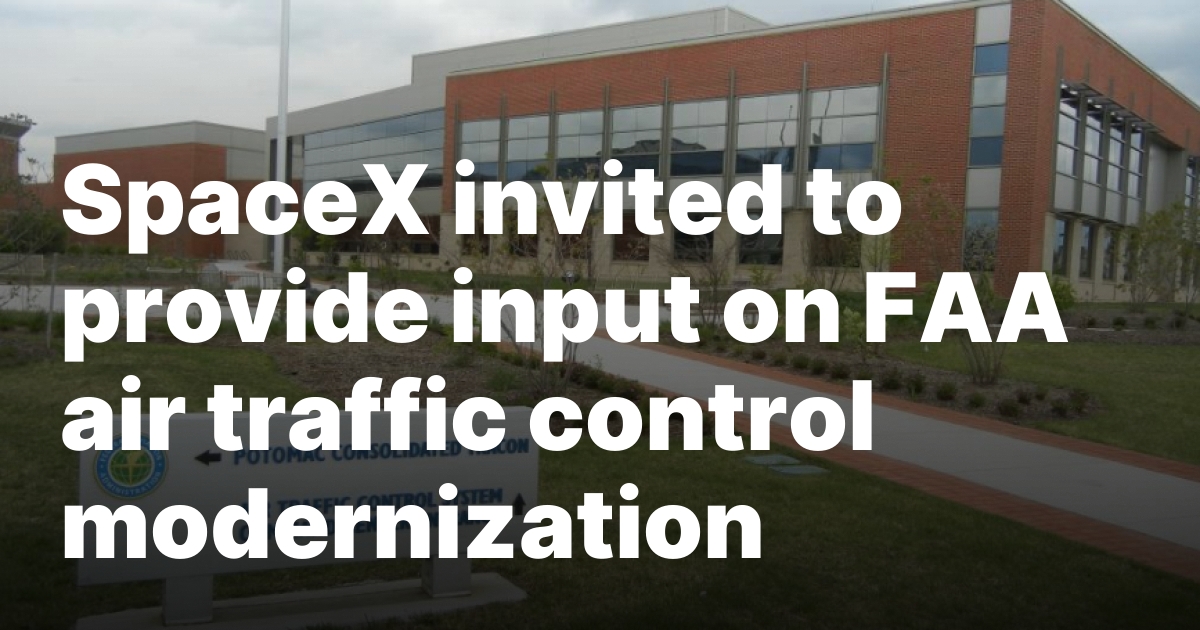Air Traffic Control Modernization: Solutions To The "I Don't Know Where You Are" Issue

Table of Contents
The Urgent Need for Air Traffic Control Modernization
Our current air traffic management systems face significant challenges that demand immediate attention. These challenges directly impact safety and operational efficiency.
Limitations of Legacy Systems:
Older radar systems and ground-based technologies present several limitations:
- Limited Detection Capabilities: Traditional radar struggles to detect smaller aircraft, particularly in challenging weather conditions like heavy rain or snow. This lack of visibility increases the risk of near-misses and collisions.
- Vulnerability to Interference and Outages: Ground-based systems are susceptible to interference from various sources, leading to temporary or even prolonged outages. Such disruptions significantly impact the safety and efficiency of air traffic operations.
- Imprecise Tracking: The inherent inaccuracies of older systems lead to imprecise aircraft tracking, increasing the risk of mid-air collisions and compromising the safety of passengers and crew.
- Inefficient Airspace Management: Outdated systems often lead to inefficient airspace management, resulting in increased flight delays, higher fuel consumption, and unnecessary emissions.
The Growing Demand for Air Traffic Management:
The demand for efficient air traffic management is rapidly increasing due to several factors:
- Global Air Travel Growth: The number of passengers flying globally is steadily rising, putting immense pressure on existing air traffic control systems.
- Integration of Unmanned Aerial Vehicles (UAVs/Drones): The proliferation of drones necessitates the integration of these unmanned aerial vehicles into existing airspace, demanding sophisticated tracking and management capabilities.
- Need for Enhanced System Robustness: The increasing complexity of airspace requires more resilient and robust air traffic management systems to prevent disruptions and maintain safety.
Key Technological Solutions for Enhanced Position Awareness
Several advanced technologies are revolutionizing how we track and manage aircraft, addressing the critical "I don't know where you are" issue.
Automatic Dependent Surveillance-Broadcast (ADS-B):
ADS-B is a game-changer in aircraft tracking. It utilizes GPS and satellite technology to broadcast an aircraft's precise location, velocity, and other crucial data directly to air traffic control and other aircraft.
- Real-time Location Data: ADS-B provides real-time, highly accurate location data, significantly improving the situational awareness of air traffic controllers.
- Global Expansion: ADS-B infrastructure is expanding globally, enhancing its effectiveness and coverage. More and more countries are mandating its adoption.
- Safety and Efficiency Improvements: By providing precise location data, ADS-B significantly enhances safety by reducing the risk of collisions and improving the efficiency of air traffic flow.
Next Generation Air Transportation System (NextGen) and Similar Initiatives:
NextGen, in the United States, and similar initiatives worldwide, represent a comprehensive modernization of the nation's air traffic management system.
- Modernization Goals: NextGen aims to improve safety, efficiency, and environmental performance through the implementation of advanced technologies, including ADS-B, data communication, and automation.
- Advanced Technologies: NextGen incorporates various advanced technologies to enhance ATC capabilities, such as data fusion, predictive analytics, and improved communication systems.
- Implementation Challenges and Future Outlook: While NextGen faces implementation challenges, its potential to revolutionize air traffic management is undeniable, paving the way for a safer and more efficient future.
Data Fusion and Advanced Analytics:
Integrating data from multiple sources—including ADS-B, radar, and other sensors—is key to improving the accuracy and reliability of aircraft tracking.
- Improved Accuracy: Data fusion techniques combine data from different sources, filtering out noise and inconsistencies to produce a more accurate picture of aircraft positions.
- Predictive Analytics: Advanced analytics and machine learning algorithms can predict potential conflicts and alert controllers in advance, enabling proactive interventions.
- Role of AI and Machine Learning: Artificial intelligence and machine learning are playing an increasingly crucial role in enhancing ATC by automating tasks, analyzing data, and improving decision-making.
Benefits of Air Traffic Control Modernization
The modernization of air traffic control offers a multitude of benefits, impacting safety, efficiency, and the environment.
Enhanced Safety:
Modernization significantly enhances safety through:
- Reduced Collision Risk: Precise tracking and predictive analytics dramatically reduce the risk of mid-air collisions and other accidents.
- Improved Situational Awareness: Controllers have a clearer, more comprehensive understanding of the airspace, enhancing their ability to manage traffic effectively.
- Effective Emergency Response: Improved communication and tracking capabilities facilitate faster and more effective responses to emergency situations.
Increased Efficiency:
Modernized ATC systems improve efficiency by:
- Reduced Delays: Optimized airspace utilization leads to fewer delays, enhancing on-time performance for airlines and passengers.
- Fuel Savings: More efficient flight paths and reduced delays result in significant fuel savings for airlines.
- Streamlined Procedures: Automated processes and improved communication streamline air traffic management procedures.
Environmental Benefits:
Modernization contributes to a greener aviation industry:
- Lower Emissions: Reduced fuel consumption directly translates to lower carbon emissions, mitigating the environmental impact of air travel.
- Noise Reduction: Optimized flight paths can contribute to noise reduction in communities near airports.
Conclusion
Air traffic control modernization, driven by technologies like ADS-B and NextGen, is no longer optional; it's a necessity. Addressing the "I don't know where you are" problem is crucial for preventing accidents and optimizing the flow of air traffic. By investing in these critical upgrades, we can ensure a future where air travel remains safe, efficient, and sustainable. Learn more about the latest advancements in Air Traffic Control Modernization and how they are shaping the future of aviation safety.

Featured Posts
-
 The 2024 Nfl Combine Key Wide Receiver Prospects For The Pittsburgh Steelers
May 07, 2025
The 2024 Nfl Combine Key Wide Receiver Prospects For The Pittsburgh Steelers
May 07, 2025 -
 Dominant Shooting Display Cavaliers Defeat Knicks
May 07, 2025
Dominant Shooting Display Cavaliers Defeat Knicks
May 07, 2025 -
 Did Trumps Policies Achieve Hollywoods Goal Of Reshoring Film Production
May 07, 2025
Did Trumps Policies Achieve Hollywoods Goal Of Reshoring Film Production
May 07, 2025 -
 Cleveland Cavaliers Rout Knicks Mitchell And Mobleys Stellar Performance
May 07, 2025
Cleveland Cavaliers Rout Knicks Mitchell And Mobleys Stellar Performance
May 07, 2025 -
 Zendayas Half Sister Exposes Shocking Family Rift
May 07, 2025
Zendayas Half Sister Exposes Shocking Family Rift
May 07, 2025
